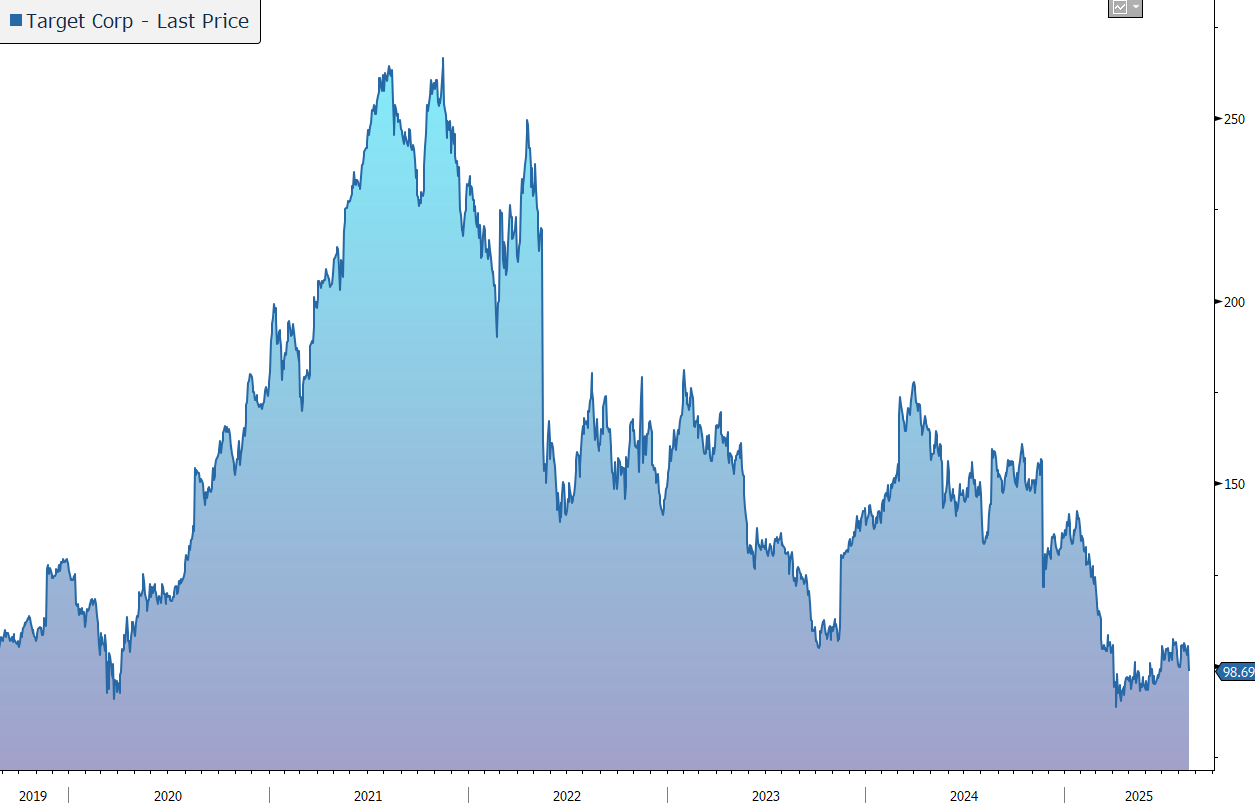Morning Note: Market news and results from US retailer Target.
Market News
JD Vance told Fox News negotiations over ending Russia’s war in Ukraine are focused on security guarantees for Ukraine and territory Moscow wants to control — including land that Russia isn’t occupying.
The minutes of the last Federal Reserve meeting showed FOMC officials saw inflation risks outweighing labour-market concerns. The focus will now turn to the Federal Reserve’s Jackson Hole symposium for policy signals. In the meantime, Fed Governor Lisa Cook said she has “no intention of being bullied to step down” despite Donald Trump’s calls for her resignation over alleged mortgage fraud.
10-year Treasury yields held at 4.30%, while gold slipped to $3,337 an ounce. Brent Crude moved up to $67.20 a barrel. US crude exports are rebounding, with shipments expected to surpass 4m barrels a day in August and September — levels not seen since the start of the year.
US equities were generally lower last night – S&P 500 (-0.2%); Nasdaq (-0.7%) – with Mag 7 and AI names weaker again. Defensive names (consumer staples, healthcare, etc.) outperformed. In Asia this morning, equity markets were mixed: Nikkei 225 (-0.7%); Hang Seng (-0.4%); Shanghai Composite (+0.2%). The yield on 20-year JGBs rose to the highest since 1999.
The FTSE 100 is currently little changed at 9,299, while Sterling strengthened at $1.3455 and €1.1550. The UK budget deficit was £1.1bn in July, smaller than the £2bn median estimate. London builders are delaying projects as higher borrowing costs bite, with median start times hitting a record 16.3 weeks — up 31% from 2023 and over 80% since 2018, Knight Frank said.
Source: Bloomberg
Company News
Yesterday afternoon, Target released Q2 results which were better than market expectations and an improvement compared to the previous quarter. However, for now the company has left its full-year guidance unchanged. The company also announced the appointment of internal candidate Michael Fiddelke as its next CEO, when some in the market would have preferred an outsider to shake up the business. As a result, the shares fell by 6% during yesterday’s session.
Target is a US general merchandise retailer, known for its big-box format. Last year, the group generated sales of $107bn from nearly 2,000 stores and through its digital channels. The group has undertaken a multi-year strategy to transform itself in the face of fierce competition by appealing to shoppers with a compelling product line, a suite of convenience-driven fulfilment options, competitive prices, and an enjoyable shopping experience.
However, the chain stocks more non-essential merchandise than its competitors, meaning over half of its sales are discretionary. The company also imports around half of its merchandise, meaning it needs to raise prices more than others to mitigate the impact of tariffs.
In the three months to 2 August 2025, despite the challenging retail environment, traffic and sales trends improved meaningfully compared with the previous quarter, particularly in stores.
Sales fell by 1.9% in comparable terms to $25.2bn, slightly better than the consensus forecast of $24.9bn. The rate of decline was an improvement on the 3.8% drop suffered in the previous quarter. Performance was driven by a 1.3% decrease in traffic and 0.6% fall in average transaction amount. Store comparable sales fell by 3.2%, partly offset by a 4.3% increase in digital sales.
The company has established an ‘acceleration office’ with the purpose of enabling faster decisions and execution of its core strategic initiatives in support of a return to growth. In addition, strong expense management and efficiency gains are helping to offset continued tariff-related and other cost pressures throughout the business.
The gross margin slipped from 30% to 29%, reflecting the net impact of merchandising activities, including higher markdown rates, purchase order cancellation costs, and pressure from category mix, partially offset by lower inventory shrink and growth in advertising and non-merchandise sales. Adjusted EPS fell by 20% to $2.05 but was just above the market forecast $2.03.
The quarterly dividend was raised by 1.8%, leaving the group on track to increase its annual payout for the 54th consecutive year. The company did not repurchase any of its stock in the quarter and still has $8.4bn of remaining capacity under its repurchase programme.
The company highlighted that pricing decisions will largely depend on ongoing efforts to source more products in the US and reduce reliance on China. Despite the slight improvement in sales trends, the company has reiterated its guidance for the full year: a low-single digit decline in sales and adjusted EPS of $7.00-$9.00.
Source: Bloomberg


